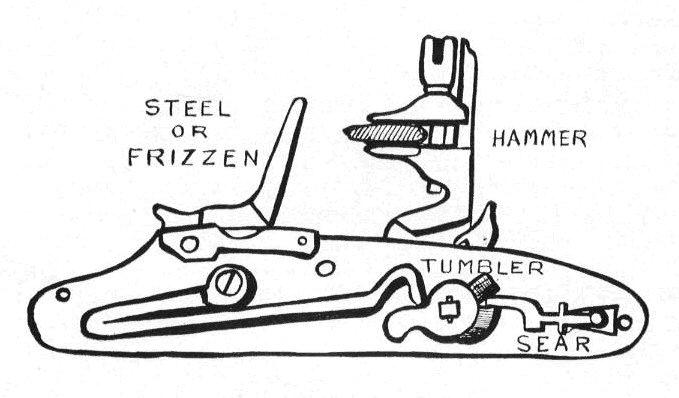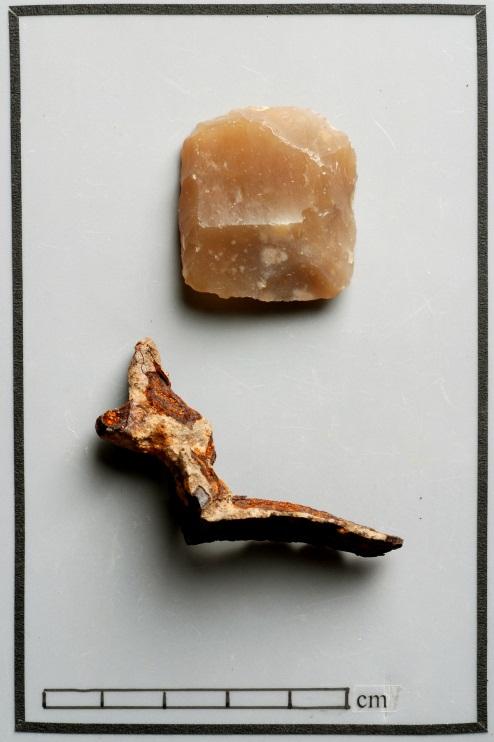Researchers at the Public Archaeology Facility analyzed over 11,500 artifacts and faunal remains excavated from intact cultural deposits. Architectural materials comprised 43% of the assemblage, which is not uncommon at a historic site. These included window glass, machine cut nails, and a minority of wire nails from the late 19th to 20th century. These artifacts probably derived from Feature 2, an outbuilding, as well as from regular maintenance on the house itself. Architectural remains by themselves may not offer much data for research, but their context within a site may often help identify activity areas and determine the locations of demolished structures.
Food related artifacts consisted of 26% of the assemblage. Feature 1 (including the organic midden soils) contained a larger proportion of these materials, which comprised about 43% of that assemblage. These artifacts were largely ceramic (n=267) and glass (n=54) vessels, with a few rarer items like utensil handles. The ceramic vessels included plates, cups, saucers, teacups, and food preparation bowls. Decorative motifs and wares identified on the table and teawares were typical of the late 18th to mid-19th century, with later styles (e.g., decals, molded ironstones) present in only small amounts. This suggests that disposal habits changed over the course of the 19th century in keeping with trends found in more populated areas. Ceramic and glass vessels are a particularly significant artifact on most historic sites as they tend to be chronologically diagnostic and thus provide a basis for dating sites and features.
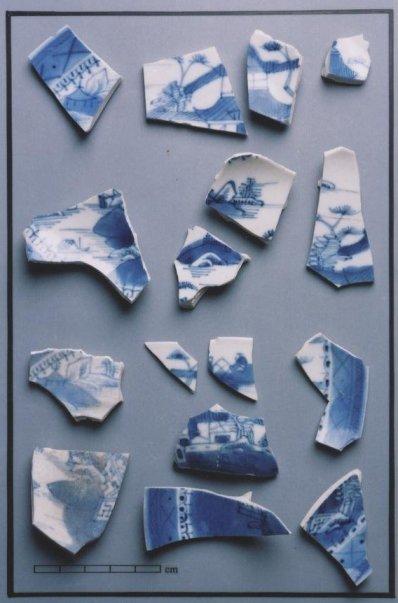
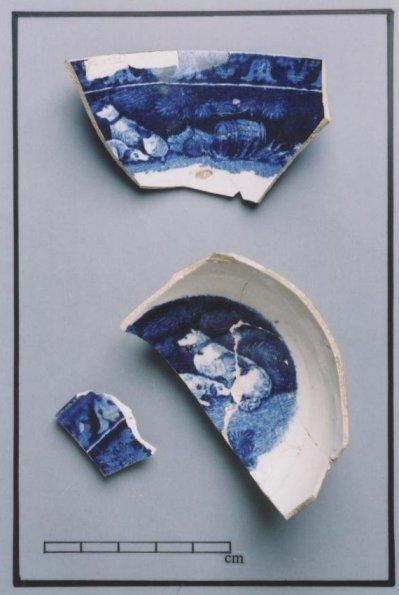
Faunal remains, including bones and shells, were the third most common artifact type found onsite. The organic midden was particularly dense in bone, and surprisingly for a frontier farmstead, 5% of the midden faunal assemblage consisted of marine clam shells. Food animals present in the midden and the general yard deposits included cow, pig, and chicken, with small amounts of deer, elk, and sheep/goat. A minimum of six pigs were represented by the total site assemblage, including adult males identified by tusk fragments. Pigs were a ubiquitous farmstead animal, and some of the remains were from the yearlings killed in the fall while others were from animals kept for breeding before eventual consumption. The cows were largely older animals, probably "retired" dairy cattle. Chickens would have also been a ubiquitous animal on the farm, and their skeletal were supplemented by the discovery of three ceramic gizzard stones that the birds had consumed while foraging in the yard.
Other artifacts gave glimpses into the personal histories of the site's occupants. Buttons, coins, slate pencils, and personal accessories were rare but poignant artifacts of the Lowmans, the Lowman tenants, and the Pecks. Few personal artifacts from the Baldwin and Goodwin eras were present, though it is possible that one of the Goodwins dropped the 1838 "Seated Liberty" dime recovered from one of the units. The relative absence of personal items from the late 18th and early 19th centuries is probably due in part to the fact that the consumer revolution had yet to fully develop and so people usually had fewer belongings. By the end of the century, it was possible for even a rural tenant farmer to have his own fancy pocket watch. The artifact assemblage here included a fragment of such an item from the Manhattan Watch Company (ca. 1880s), who made inexpensive watches for mass consumption.
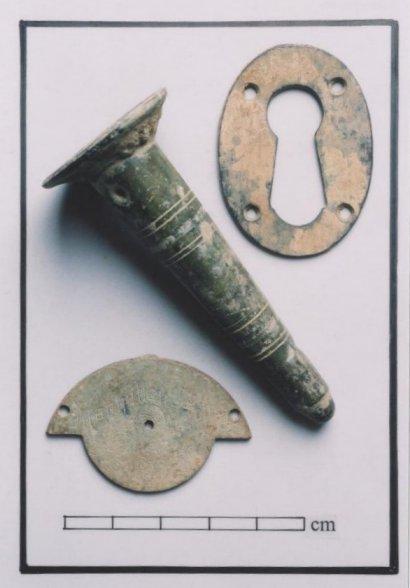
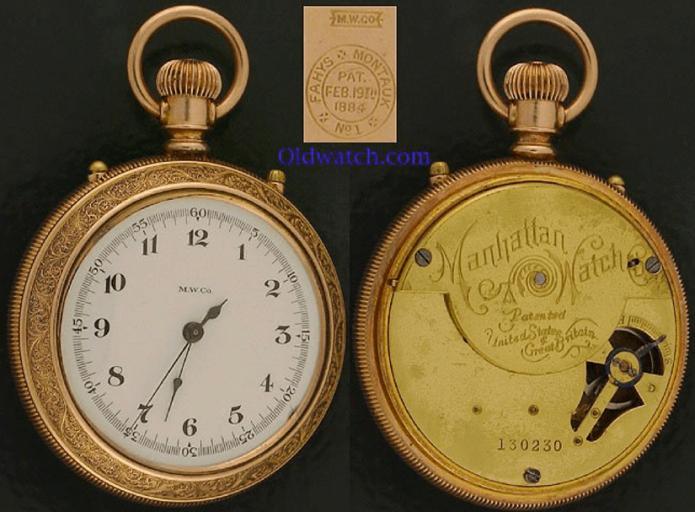
Another group of artifacts worth discussing here are those that may be related to the Newtown Battle, the Native American occupation of the area prior to the battle, and/or the possible diplomatic ties between Waterman Baldwin and the Seneca Nation. The battle was initiated by Clinton and Sullivan's mission to destroy Haudenosaunee villages, such as the nearby village of Chemung. Other historic and prehistoric Native American sites have been identified in the Chemung River Valley, so it would not be unusual for the Baldwin Site to yield at least some evidence of a Native American presence. The combined excavations yielded two undiagnostic projectile points, a scraper, and several flakes of Onondaga chert. The scraper and two of the flakes were recovered from the soils used to fill in the Feature 2 foundation. As the archaeological context of these artifacts was obscured by their presence in the historic Baldwin Site, it is difficult to interpret these as anything more than either stray objects lost or discarded by Native Americans prior to the arrival of Isaac Baldwin, or possibly to "curios" collected by the farm's inhabitants.
Archaeologists also recovered seven glass beads and one bone bead from the site. The glass beads are trade beads which were used as a means of exchange between European explorers and settlers and Native Americans. Some of these may have originated at the village destroyed by Clinton and Sullivan, such as two red multi-layered tube beads which likely pre-date 1740. Three blue, faceted beads may date through the end of the 18th century. Any or all of these could have originated in the nearby village and been later carried to the site as "curios". They may have also been used by local Native Americans who sought to trade with the Baldwins, or by Waterman Baldwin, who likely had access to the beads during his encounters with Cornplanter and the Senecas.
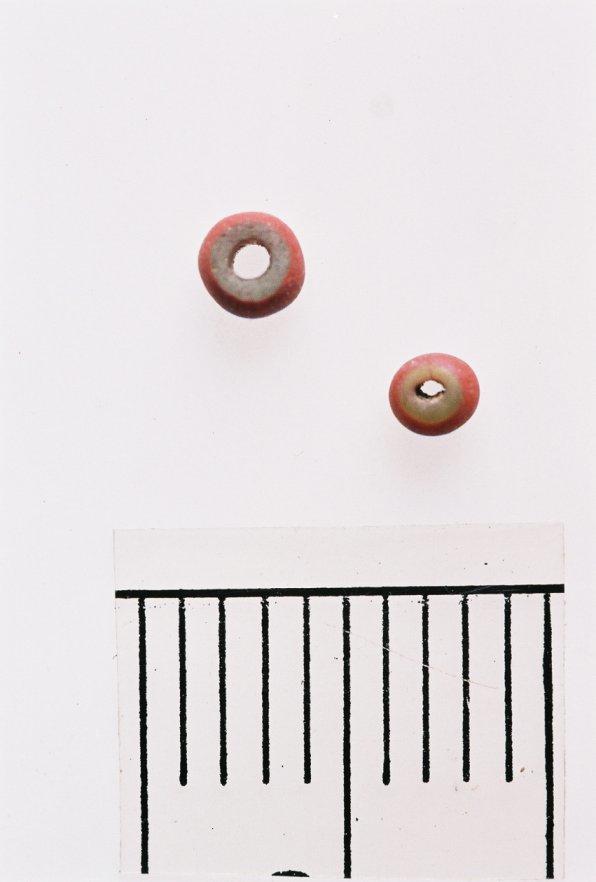
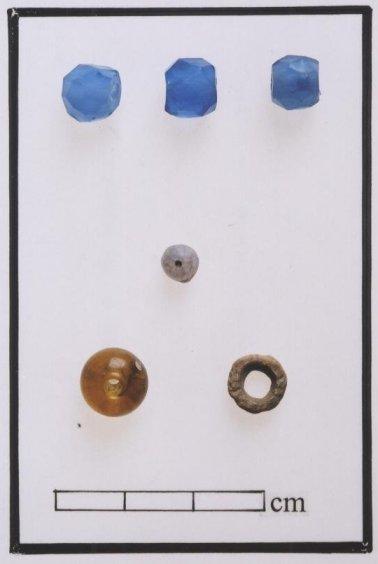
Archaeologists also recovered two pieces of flint-lock guns, which may have been used in the battle or later by the Baldwins. The artifacts were a caramel-colored gun flint, which was likely imported from France, and the frizzen, which is struck by the flint to create an igniting spark. Five cartridges dating from late 19th and early 20th century and used by the Lowman tenants were also recovered from the site.
